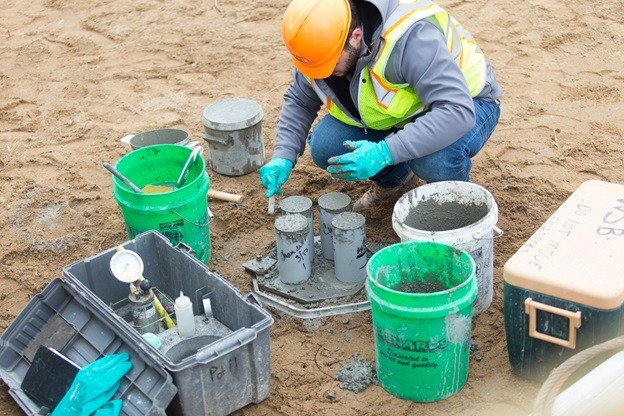Buying a new house is one of the most important financial decisions you will make. It is an investment in a better way of life and a wise financial decision that benefits you, your family, and the environment when your new house is constructed or upgraded, as well as throughout its entire cycle.
Green Materials
Green construction materials and furnishings, such as non-oil-based paints and renewable-sourced textiles, should be your first choice in constructing or remodelling your home. When it comes to environmentally friendly building materials, there are several options accessible today.
Some alternatives include sustainability-certified wood products, recovered or salvaged wood, and insulation made from recycled materials. Speak with your builder about incorporating green materials into your new home or renovation. You may help the environment while simultaneously preserving your family’s health by using non-toxic materials, low-VOC paints, and renewable derived textiles, which are now widespread.
Furthermore, salvaged kitchen tiles, bamboo for dramatic wood features, and sustainably sourced hardwoods for your outdoor deck may all be utilized to bring a unique flair to the interior design of your house.
Ensure that your home’s windows and doors are excellent of quality and well-sealed
Air may enter and exit the home if doors and windows are not adequately sealed. When the temperature in your house varies, your heating and cooling systems have to work harder, which wastes energy and costs money. Ascertain that the builder has appropriately sealed your home’s windows and doors.
In the summer, warm air may readily enter your home, and the same is true in the winter when sagging doors or windows enable heat to leave. Timber windows and outside doors should be made from sustainable forestry, certified, and must be kept well-sealed to avoid undesired heat gain in the summer and heat loss in the winter.
In the construction of your new home, consider high-quality, and well-sealed doors and windows that will not put a strain on your heating and cooling systems. You can visit this website to check the quality of materials for home construction. They help you in verify project compliance and ensure quality is followed throughout the life cycle of your project.
Purchase energy-efficient appliances
Energy-efficient lighting, cooling, and heating systems are standard in eco-friendly homes. You should only purchase appliances with the highest energy ratings available.
In the long term, an investment in energy-efficient appliances with a high star rating will pay for itself. Light bulbs, coolers, freezers, TVs, dishwashers, and washing machines may be selected with high energy efficiency labels. You may be surprised by how much money you’ve saved when your gas and electricity bills arrive.
Your home’s size should be reduced
Regardless of how many green building elements it contains, an 800 square meter greenhouse consumes much more natural resources than a 400 square meter green home.
A smaller home needs fewer resources to build, but it also consumes less energy to cool and heat. If you’re planning to create a new home, be sure to honestly assess your needs regarding the quantity and size of rooms.
Tiny houses, which have grown famous on television shows, offer clear environmental and energy advantages.
Choose a green spot
An environmentally-friendly site entails much more than merely being surrounded by greenery and having neighbours with low pollution levels. A variety of things influences a community’s environmental friendliness.
Sites that were previously used for something else but repurposed for new construction are generally the most environmentally friendly.
To avoid wasting space, look for enhancements that are small and efficient. You should be able to leave your vehicle at home if you live near public transportation, such as buses, trains, and bike lanes. It would also be ideal if the house were close to public parks, schools, and retail malls.
If you live close to all of your necessities, you’ll spend less time driving around town, and local public transportation will make your commute easier. This strategy is more beneficial to you, your money, and the environment.
Utilize renewable energy in your home
For example, solar panels and battery storage systems may be utilized in combination with energy-efficient equipment in your home. When planning the construction of a new house, experts strongly advise using renewable energy systems, such as solar panels, home wind turbines, or micro-hydroelectric production.
To save money down the road, consider switching to renewable energy sources while the building is still under construction. Your house may create part of its energy needs via solar power and battery storage devices, both of which are renewable energy sources.
Solar panels or a ground heat pump should heat both the house and the pool water, and both should originate from a renewable source.
You might save a lot of money on your power bills using renewable energy to heat your water. You may use the sun’s energy to passively heat or cool your new home.
Think about insulation
Insulation can keep you comfortable all year round. Inadequate insulation creates even another problem with the property’s heating and cooling.
Because of the ease with which heat may pass through poor insulation, you may find yourself spending more money on energy than you intended.
To keep a house from overheating and losing heat, a home’s walls and roof should be insulated with non-toxic, high-R-factor materials.

